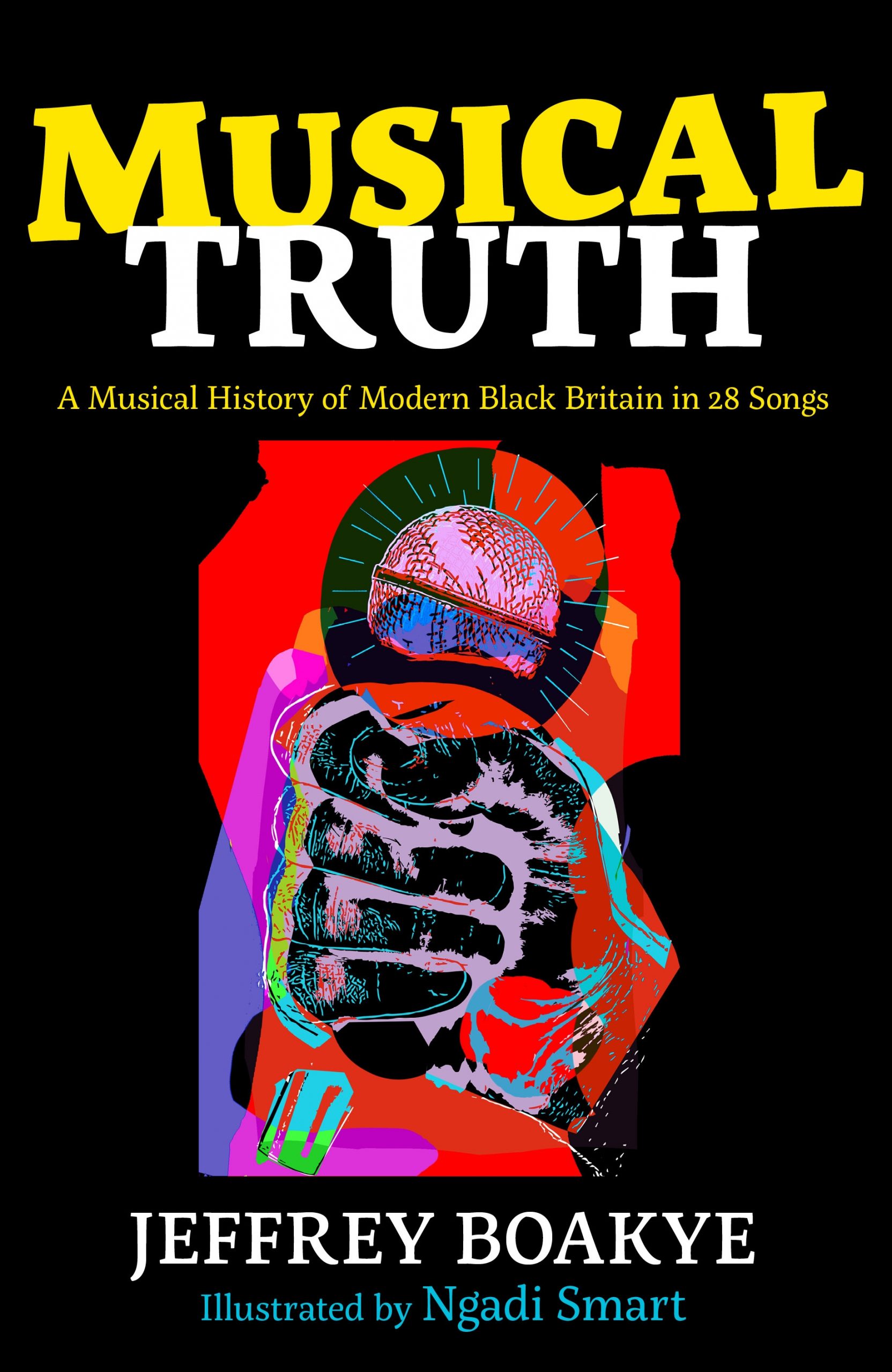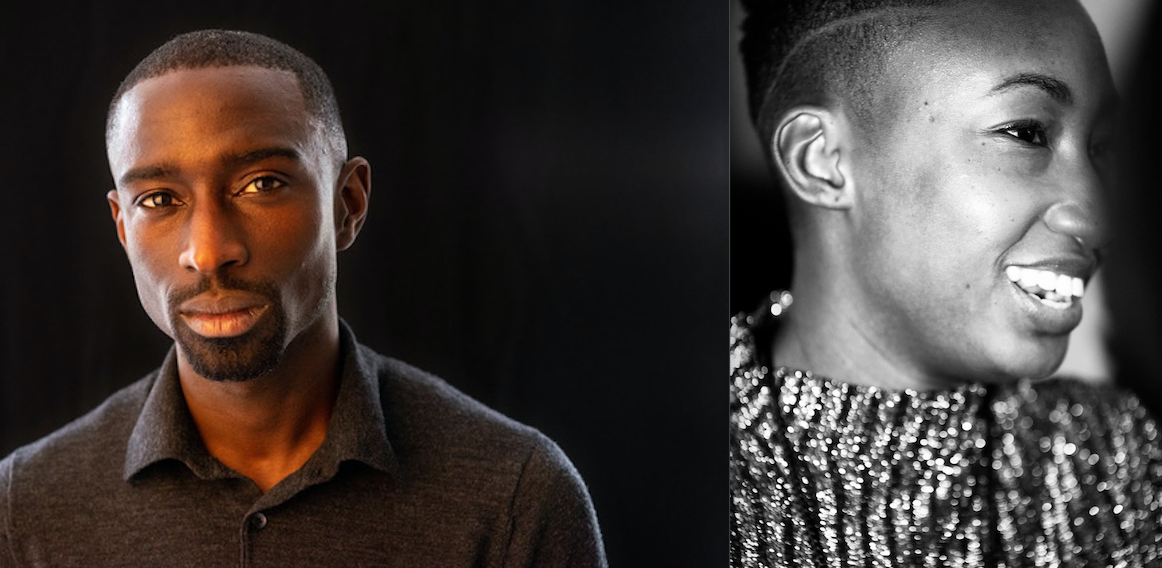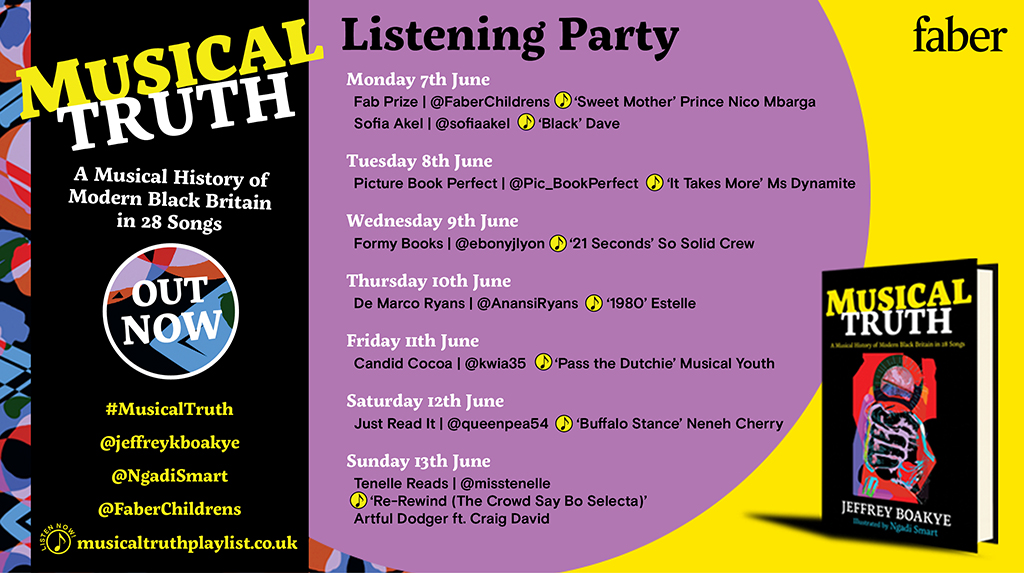Musical Truth: A Musical History of Modern Black Britain in 28 Songs. The title alone gave me reason to pause and take in the moment. I was holding history in my hands. I was holding my history in my hands. What’s more, it had been written in a language that I could understand, music.

Music can draw emotions out of me in a way that surpasses anything else. As I poured myself into this masterfully curated playlist, I felt all of them: joy, sorrow, pain and strength. All of these feelings were present when I reached the chapter on Prince Nico Mbarga’s song, ‘Sweet Mother‘. The first few notes took me back to every hall party, family gathering and community get-together. It took me back onto the dance floor as a young girl, holding the hands of my chosen-mother and singing the lyrics to her. It took me back to a place of joy. Good music will call to mind the sweetest memories. So when I was asked to take part in the listening party for this book, ‘Sweet Mother’ was the first song that came to mind!
I sat down with author, Jeffrey Boakye (shown in black text), and illustrator and 2020 FAB Prize Winner, Ngadi Smart (shown in blue text), to talk further about their work.

I remember reading Musical Truth when it first came to us. I was outside on my balcony on a sunny afternoon and, of course, I had to play the music out loud as I was reading. It felt like such a vibe. I have not stopped talking about it since! What made you want to write this book?
I’m on a bit of a mission with my work. It feels like a form of activism with my position in publishing. There is a reason why I’m not writing books about people in coffee shops falling in love. After writing Black, Listed: Black British Culture Explored, I was concerned that there were narratives that young readers were not exposed to. In a way, we are all young readers because we all come through the same system. It keeps us ignorant and naïve; you could say that it keeps us young.
I wanted to write something that spoke to people that were not well versed in marginalised histories and the Black British narrative. Musical Truth was my attempt at this. On a superficial level, it’s for kids, but it’s actually an intergenerational project. The idea of writing a book that was accessible to everyone was at the front of my mind. I wanted to use music as a way in. Music can hit your core without you feeling pain. It tells a story and explains traumas. Music is a celebration, but it is also resistance and protest. One song can do all things simultaneously. Talking about these songs chronologically and with context transforms this into a history book.
That’s so interesting. I feel like I’m on a bit of a mission with my work too. I’m motivated by the representation of minorities, especially Black people. I work to highlight cultural identity and racial discrimination, as well as themes on feminism and gender roles. I like to deconstruct society’s preconceived views of what they define as normal, beautiful and right.
It’s easy to see why your work compliments each other’s so well. In my second year of university, I studied a module on Black writing in Britain. Music came up so often, including many of the songs referenced in Musical Truth. There is something about the way music moves across generations, especially within our communities. I often say that we have music and dance in our bones, spirit and being. It is so refreshing to see it documented in this way. So many of the songs you write about brought back great memories. Music is just so powerful!
It really is! Every song is part of a heritage of musical styles, genres and artists. When you listen to a song, you’re putting your hand into a pot of culture. To look at history through music is to consume that culture. It’s such a great tool because music is so palatable and yet so rich.
Ngadi, what were some of your favourite songs from the book?
That is a tough one! It has to be either Sade’s ‘Immigrant’, (because who doesn’t love Sade?) or Craig David and Artful Dodger’s ‘Re-Rewind’. I remember when that song come out. It’s such a classic from that time.
Like music, art is also such a powerful tool, especially with a book like this. Jeffrey, what was it like seeing Ngadi’s work alongside yours?
Ngadi’s work is so kinetic, it has so much life. She interprets each artist with such a modern interpolation that it makes you feel like you’re in the moment with each of them. She brings immediacy to the writing and the songs. She was a perfect choice.
Ngadi, how did you feel when you were approached with this project?
I was so excited. A lot of the musicians he chose I grew up listening to as a teen in the UK, so this was truly an honour for me to draw! The last year has been absolutely amazing. After winning the FAB Prize, I got to work with Jeffrey on this and now I have illustrated a published book. What more could I want?
How did you get into illustration? When did you realise this was what you wanted to do?
I have always drawn, even when I was younger. I would obsessively draw and make stories about various characters, in multiple drawing pads. After taking a foundation course in Art & Design, my art teachers pointed out that my work often has a narrative to it and suggested that I look into illustration.
What lessons have you learnt in the process of working on this book?
I’ve learnt just how much joy overlaps pain. It’s important to recognise this. Over the past year, there has been an awakening and realisation of the racism that has always been there. This new awakening can very quickly become centred on trauma. Yes, it’s important to see the trauma, recognise it, understand each other’s humanity and try to fix it. But at the same time, there’s so much to celebrate! There is so much joy accompanying our resilience.
I don’t shy away from pain within this body of work. There are passages that are difficult to read and direct references to the ways so many of us have suffered at the hands of a society that is structurally racist. But at the same time, there are moments of joy throughout Musical Truth because there have always been moments of joy throughout our history. It has been humbling to explore this and it gives the book such duality; it enlightens people to the darkness of the past whilst drawing on the light. That’s something I’ve thought hard about in my writing and its purpose.
I’ve also learnt how hard it is to write for a cross-generational audience. This has been a difficult book to write, maybe the hardest one I’ve written so far. It’s deceptively straightforward and seemingly simple. It feels accessible, but there’s a lot going on within the pages, it’s really dense. I had to think hard about which notes to play at which point and how to navigate these complex ideas.
What about you, Ngadi? What have you learnt? Is there any advice you would give to someone in the same position you were in this time last year?
If you’re thinking about applying for the FAB Prize this year, go for it! You never know what might happen! I entered last year and just didn’t see myself winning. At all. I felt like there were just so many other great illustrators. Self doubt is real as an artist but sometimes you just need to take that leap and trust in your abilities, with that may come a greater reward than you can imagine right now!
Jeffrey, what advice would you give to new writers?
Write a lot! Not everything you write will be right for the market but write anyway. You would be shocked to know how many manuscripts I have written, many of which will never be seen by anyone other than myself.
Write what you want to write. Focus on what excites you! Life is long but it is also very short. Write about the things that actually interest you. My first book, Hold Tight: Black Masculinity, Millennials and the Meaning of Grime was so much fun to write. If I got bored mid-sentence, I would flip it, change the style or write in verse. I took that energy into Black, Listed as well. It was a serious book about race, but I refused to write a single chapter that didn’t excite me. If it was boring to me, I found a way to make it interesting. This is so important because your creative energy is infectious and it permeates onto the page.
Remember that everything around you will find its way into your writing. I think knowing that is so powerful. Write about your experiences and draw on the things you’re taking in, even if it’s a silly show on Netflix. That is your fuel, so just burn it.
What was the first book that you read that made you feel seen?
It has to be Matilda. I felt like I knew her, like I was her. My dad would take me to Brixton Library and leave me there to delve into books. Like Matilda, I would spend long afternoons wandering around and getting lost in books. Matilda felt like a book about what I was doing. She escaped into literature just like I did. Being immersed in books at such a young age allowed me to travel the world. I was just a kid in Brixton, but I could go anywhere through the books I was reading.
I resonate with that so much. I read a lot as a child too and it allowed me to explore other worlds as well as understanding my own.
I used to love Roald Dahl books too! For me it was Charlie and the Chocolate Factory and James and the Giant Peach.
I remember my dad reading The Twits with me for the first time when I was younger. To this day he still laughs about some of the tricks they played on each other.
Let’s take a minute to talk about the publishing industry. Jeffrey, you spoke about the events that took place last summer as an awakening. What do you think that moment symbolises? What are your hopes for publishing, specifically for children’s publishing?
There are so many children who are not represented in the books they are reading and so they have to translate their identity into those characters and worlds. I know what that’s like, even as an adult. We need to have access to books that contain cultures, histories and experiences that are different from our own. Publishing has a responsibility to move away from the single narrative to really allow marginalised stories into the centre. This allows society to build the basic empathy that has been missing for far too long. So many of us haven’t had access to parts of our own stories because they have never been published. As a result, our understanding of ourselves is limited to personal experiences. That needs to change. I contribute to that by writing stories that I’ve never seen on bookshelves.
I would like to see even more diversity too. There is a shift happening right now but we need even more change. Diversity is so important in illustration because out of it comes work that truly represents and reflects how multicultural and multifaceted our world actually is. When the industry fails to level out the playing field for artists from different racial and cultural backgrounds, it becomes detrimental to the way children and people relate to themselves and see opportunities for themselves in images.
It was such a pleasure talking to both Jeffrey and Ngadi about such an important book! Look out for the rest of the blog tour!

Our FAB Alumni Say:
Don’t miss Musical Truth; a whistle-stop tour of Black British modern history to the soundtrack of Black British music. Boakye takes us on a musical journey from the calypso of the Windrush generation through R&B, rap, soul, garage and grime to the beats of current artists like Stormzy. Accessible, informative and empowering Boakye’s narrative unpacks key topics along the way such as the British Empire, the slave trade and the Black Lives Matter movement, providing a snapshot of where the Black community stands today and how we got here. A fascinating read for teens, stylishly illustrated by the talented Ngadi Smart.
Mariesa Dulak, FAB Prize 2020 Text Winner
Musical Truth is a prime example of how music powers the soul. It has always been a part of Black British culture and history, and Musical Truth truly encompasses that, taking us through a nostalgic and powerful journey of the relationship between music and modern Black Britain, especially when it comes to telling our story and history.
A journey that isn’t told to us in school, but echoed through our music, art and film. Music in our hearts and this is a book that should be read and taught about in schools, so children from all ages and backgrounds can get either a sense of belonging, connection or understanding of Black Britain and Black British culture.
Janelle McCurdy, FAB Prize 2020 Second Place Text Winner
Jeffrey Boakye’s Musical Truth should be regarded not only as a handbook for young people interested in the origins of modern British music, but more excitingly as a tome for young Black Brits who would like to know the impact that Black creativity has had on British society. Ngadi’s art lights up Boakye’s honest and empowering words by providing electrifying illustrations of each band and musician mentioned. These two have created a terrific timeline of socio-political, historical and creative relevance for young British readers to explore with pride.
Akhran Girmay, FAB Prize 2020 Second Place Illustration Winner



